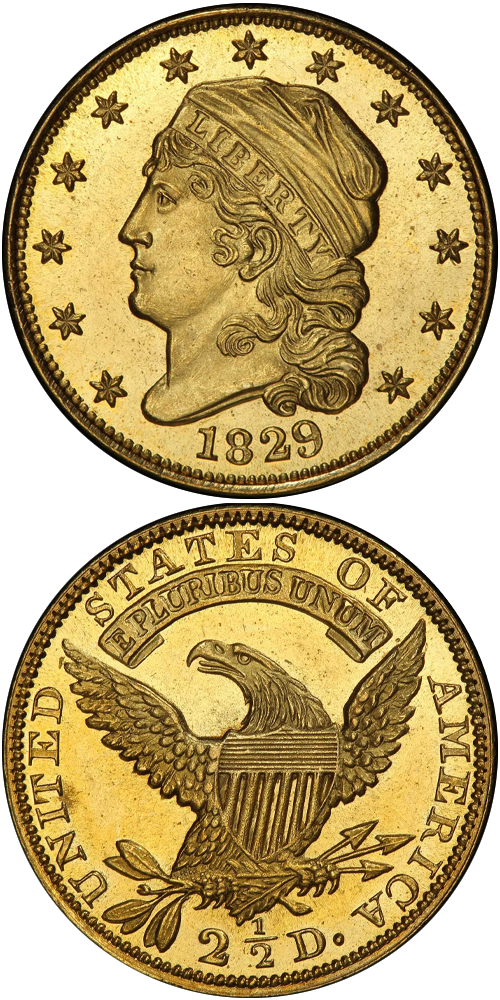1829 Capped Head Left Quarter Eagle
A historically important rarity, the 1829 quarter eagle issue was struck with a reduced diameter and an upset rim that produced a distinctive appearance from early quarter eagle types. While most past writers, following Breen, have insisted that this difference stems from the innovation of a "close collar," the sort of collar die that remains in use today, other researchers, including John Dannreuther, Brad Karoleff, and Craig Sholley, have shown that such collars had been used for decades. The reeded edges on silver coinage starting with the 1792 half dimes, and the squared edges seen on copper coinage beginning in 1816, come from a collar not entirely unlike the one used in 1829. The appearance of broader and better-defined rims, first seen on dimes in 1828 and quarter eagles and half eagles in 1829, neatly coincides with the introduction of the new screw press made by Rush and Muhlenberg in late 1827. John Dannreuther has posited that the timing of the new-style rim is no coincidence, instead, the change was reliant upon alterations made possible by the arrival of the new press. William Kneass, hired as Mint engraver in 1824, was responsible for these design changes, including the new motifs seen on this short-lived type. The modifications performed by Kneass, reducing the diameter while adding broader and better-defined rims, improved strike quality and wear characteristics, all while striking up an attractive high relief portrait.
Though the 1829 issue is known to have the lowest mintage figure of this design type, it is not the rarest date today; that honor would go to the 1834, the last of the Old Tenor type. Only a few Proof 1829 quarter eagles are known. Though their population was estimated by Akers at "eight to ten," neither NGC nor PCGS has ever certified a Proof of this date. The only two Proofs confirmed by John Dannreuther are both in institutional holdings (National Numismatic Collection and the Harry Bass Core Collection, ex. Auction '85).
The example to the left was sold by Stack's Bowers Galleries in the D. Brent Pogue Part II Auction, where it realized $105,750.






